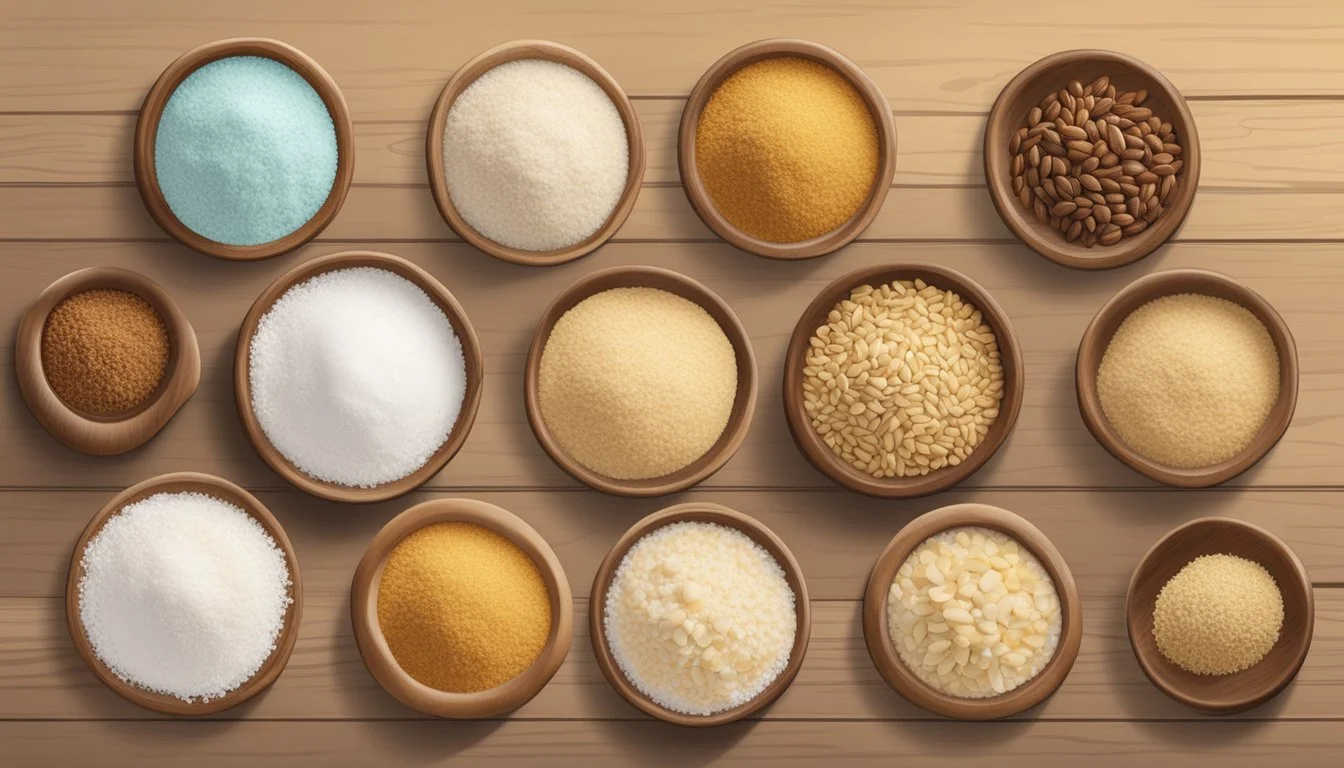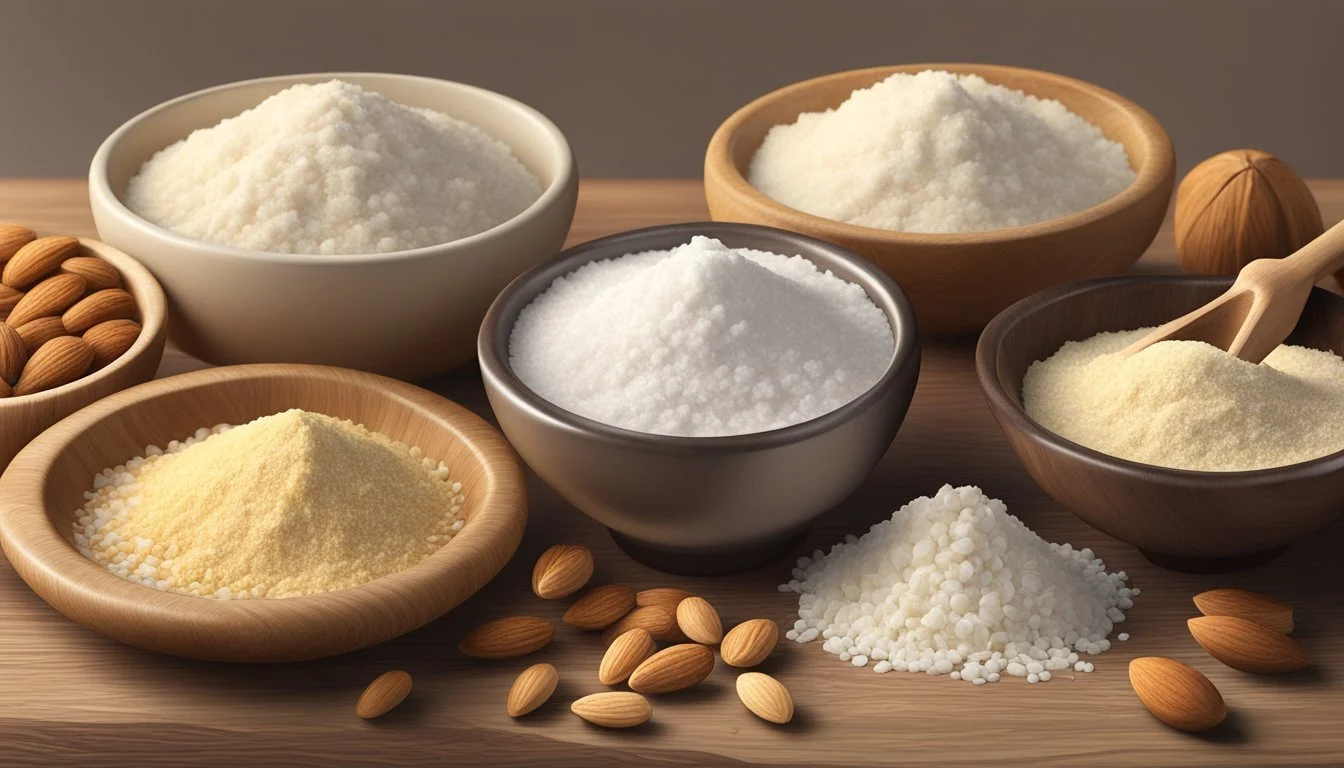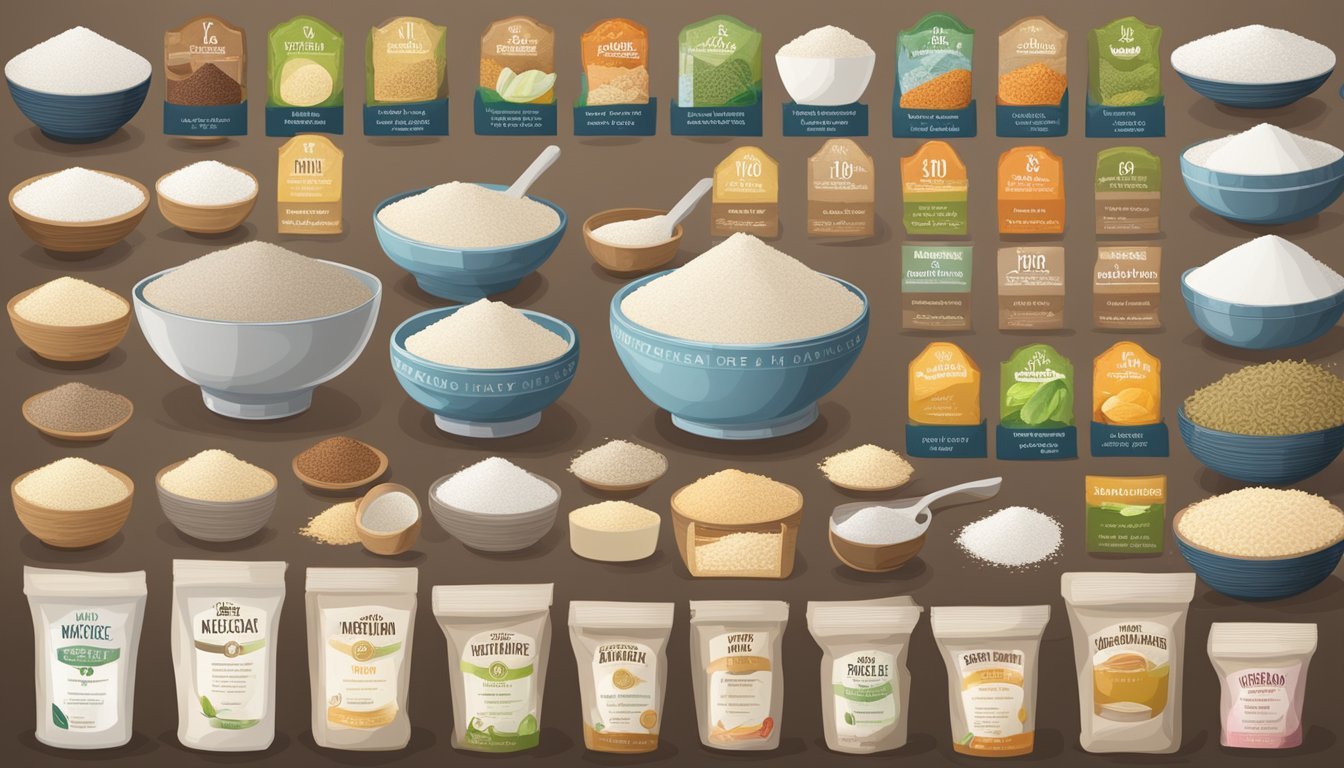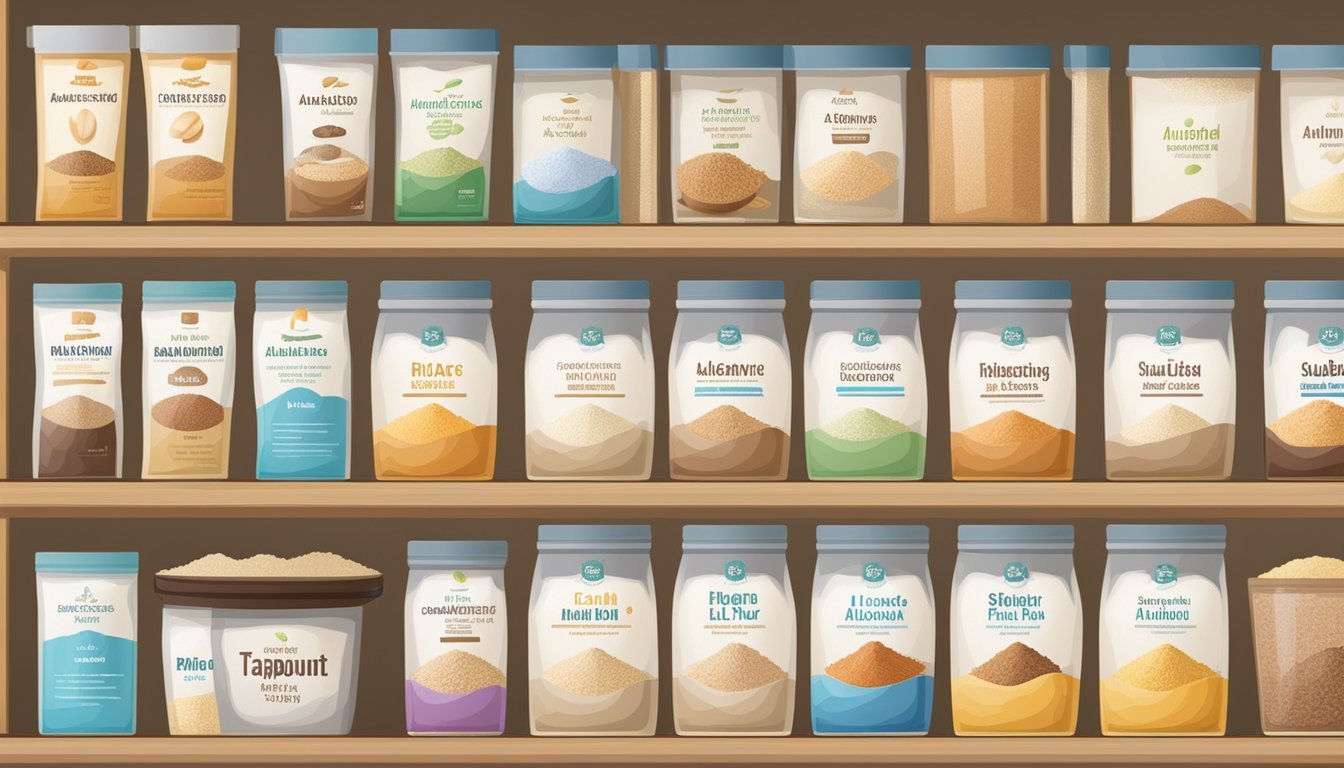Rice Flour Substitutes
Best Alternatives for Gluten-Free Baking
For those seeking alternatives to rice flour, whether due to dietary restrictions or culinary experimentation, a variety of viable substitutes are available. Potato flour, made from dried white potatoes, is a gluten-free option often used in conjunction with wheat flour for baking. This unique flour mirrors the powdery texture of rice flour, making it an excellent choice for recipes that require a similar consistency.
Chickpea flour, another gluten-free substitute, brings its own distinct flavor to baked goods, such as flatbreads and pizza crusts. Although it has a stronger taste compared to rice flour, it can add a delightful twist to traditional recipes. Arrowroot powder, also known as arrowroot flour, is particularly useful in thickening sauces and gravies, thanks to its neutral taste and gluten-free properties.
Each of these substitutes brings its unique characteristics to the table, allowing cooks to maintain variety and texture in their culinary creations without relying on rice flour. Exploring these options can lead to new and exciting flavor combinations, enhancing both sweet and savory dishes.
Understanding Rice Flour
Rice flour is a versatile ingredient known for its fine texture and light flavor, making it a popular choice in gluten-free cooking and baking. This section explores the key characteristics of rice flour and its common uses in various culinary applications.
Characteristics of Rice Flour
Texture and Flavor:
Rice flour has a fine, powdery texture. This texture is crucial for recipes requiring smooth, consistent mixtures.
It offers a mild, neutral flavor, which allows it to blend well with other ingredients without overpowering the dish.
Gluten-Free Properties:
As a naturally gluten-free option, rice flour is a staple in gluten-free diets.
It provides a suitable alternative for those with gluten intolerance or celiac disease.
Types of Rice Flour:
There are two main types: white rice flour and brown rice flour.
White rice flour is made from polished white rice, leading to a lighter texture.
Brown rice flour uses whole grain brown rice, offering additional fiber and a slightly nutty flavor.
Common Uses in Cooking and Baking
Thickening:
Rice flour is effective as a thickening agent for sauces and gravies due to its fine texture. It dissolves easily, providing a smooth consistency.
Baking:
In baking, rice flour is used in a variety of items, ranging from cakes and cookies to bread. Its gluten-free nature requires it to be combined with other flours and binders like xanthan gum or egg whites.
Common substitutions include using equal parts of rice flour to wheat flour but adjusting liquid levels and adding binding agents.
Frying and Coating:
Rice flour creates a crisp, light coating for fried foods. It is often used in Asian cuisine for dishes like tempura.
For frying, it can be mixed with cornstarch or other flours to achieve the desired texture.
By understanding these characteristics and common uses, one can effectively incorporate rice flour into various recipes, ensuring optimal texture and flavor while adhering to gluten-free dietary needs.
Gluten-Free Substitutes for Rice Flour
Choosing the right gluten-free flour can greatly affect the texture and flavor of your dish. The subsections below cover various substitutes, from nut-based options to ancient grains.
Almond Flour
Almond flour is a popular substitute for rice flour in gluten-free baking. Made from finely ground almonds, this flour is rich in protein and adds a mildly sweet taste to baked goods. It works well in recipes for cakes, cookies, and bread.
Almond flour has a high fat content, which can help keep baked items moist. When substituting for rice flour, it's often best to combine almond flour with other gluten-free flours to achieve the right texture. This flour is particularly suitable for those adhering to Paleo diets.
Coconut Flour
Derived from dried coconut meat, coconut flour is another excellent gluten-free substitute for rice flour. It has a slightly sweet flavor and is high in fiber. Coconut flour is highly absorbent; therefore, recipes generally require less of it and more liquid compared to rice flour.
This flour is ideal for making pancakes, muffins, and other baked goods. Due to its absorbent nature, coconut flour often works best when paired with other flours to balance texture. High in medium-chain fatty acids, it also provides nutritional benefits.
Buckwheat Flour
Despite its name, buckwheat flour is gluten-free and not related to wheat. Made from ground buckwheat seeds, it has a robust, earthy flavor and is rich in both protein and fiber. It's a perfect option for making hearty baked goods like bread, pancakes, and waffles.
Buckwheat flour also has a dark color that can affect the appearance of your recipes. For a lighter texture and color, it can be blended with other gluten-free flours. People with Celiac Disease or gluten intolerance can safely enjoy this nutritious alternative.
Millet Flour
Millet flour, made from ground millet, is another gluten-free option that substitutes well for rice flour. This flour has a mild, slightly sweet flavor and a fine texture, making it suitable for baking bread, muffins, and cakes. Millet flour is a good source of essential nutrients like magnesium and phosphorus.
To get the best results, it's often mixed with other gluten-free flours to improve texture and consistency. It's a great option for those looking for a nutritious and versatile gluten-free flour.
Sorghum Flour
Sorghum flour is produced from ground sorghum grain and offers a sweet, nutty flavor. It's an excellent source of protein and fiber, making it a nutritious alternative to rice flour. Sorghum flour works well in a variety of gluten-free recipes, including cookies, pancakes, and bread.
Its properties help with adding structure and moisture to baked goods. For optimal texture, it's often advisable to combine sorghum flour with other gluten-free flours. Sorghum’s versatility and nutritional benefits make it a valuable addition to gluten-free baking.
Starch-Based Alternatives
When substituting rice flour in recipes, starch-based options like cornstarch, potato starch, tapioca flour, and arrowroot powder are excellent choices. These substitutes can be used for thickening sauces, soups, gravies, and in various baking applications.
Cornstarch
Cornstarch is a versatile, gluten-free substitute for rice flour. It is particularly effective as a thickening agent for sauces, soups, and gravies. When using cornstarch for thickening, it is important to mix it with cold water to create a slurry before adding it to hot liquids to avoid clumping.
In baking and frying, cornstarch can be used in equal amounts to rice flour. It imparts a light, crispy texture to fried foods and is excellent for softening the texture of baked goods.
Potato Starch
Potato starch is another gluten-free alternative that works well in recipes requiring rice flour. It's derived from crushed potatoes, extracting the starch, and features a minimal flavor profile, making it suitable for various dishes without altering taste.
Particularly effective as a thickener for soups and sauces, potato starch creates a smooth, glossy finish. Unlike potato flour, which includes the whole potato, potato starch is lighter and should not be confused or used interchangeably.
Tapioca Flour
Tapioca flour, also known as tapioca starch, is a popular alternative to rice flour. It's made from the root of the cassava plant and is well-regarded for its ability to thicken sauces and gravies. Unique to tapioca flour is its ability to add a chewy texture to recipes, making it ideal for gluten-free baking.
For most recipes, use double the amount of tapioca flour compared to rice flour (2 parts tapioca flour : 1 part rice flour) to achieve the desired consistency.
Arrowroot Powder
Arrowroot powder, or arrowroot flour, is another effective rice flour substitute. Extracted from the root of the arrowroot plant, it is paleofriendly, gluten-free, and neutral-tasting. This makes it suitable for thickening sauces, soups, and gravies without affecting their flavor.
Arrowroot powder is especially preferred in dairy-based recipes as it maintains its thickening properties better than some other starches. It provides clear, glossy sauces and is easily digestible, making it a good choice for those with sensitive digestive systems.
Wheat-Based Alternatives
Wheat-based alternatives to rice flour include All-Purpose Flour and Cake Flour. Each has unique properties and uses in cooking and baking, which can make them effective substitutes in various recipes.
All-Purpose Flour
All-Purpose Flour is made from a blend of hard and soft wheat. It offers moderate protein content, which provides elasticity and strength to baked goods. It is ideal for bread, cakes, pancakes, and noodles.
When substituting for rice flour, All-Purpose Flour helps dough rise due to its gluten content. While it may not be suitable for gluten-free diets, it is versatile for everyday use. It also works well as a coating for frying and in thickening sauces.
Cake Flour
Cake Flour is made from soft wheat and has a lower protein content. This flour creates a fine, tender crumb in cakes and other delicate baked goods.
Due to its lower gluten content, Cake Flour produces a lighter texture in recipes like cakes and pastries. When using it as a rice flour substitute, it can be effective in creating softer, more elastic baked items. Though it may need additional tweaking for perfect results, it achieves excellent rise and texture in lighter dishes.
Legume and Seed Flours
Legume and seed flours offer unique flavors and nutritional profiles, making them excellent substitutes for rice flour. Chickpea and quinoa flours, in particular, are rich in protein and fiber, and are widely used in various cuisines.
Chickpea Flour
Chickpea flour is a popular gluten-free alternative made from ground chickpeas. Known as gram flour or besan, it is rich in protein, fiber, iron, and calcium.
Nutritional Benefits:
Protein: High protein content, beneficial for vegetarians.
Fiber: Promotes digestive health.
Iron and Calcium: Supports bone health and oxygen transport.
Culinary Uses:
Common in Indian cuisine for dishes like pakoras and chillas.
Ideal for savory dishes such as flatbreads, pizza crusts, and tortillas.
Adds a distinct nutty flavor and can thicken soups and stews.
Quinoa Flour
Quinoa flour is another gluten-free seed-based flour that packs a nutritious punch. Derived from quinoa seeds, it is rich in protein, fiber, iron, and vitamin E.
Nutritional Benefits:
Protein: Contains all essential amino acids.
Fiber: Enhances digestive health.
Iron and Vitamin E: Supports immune function and skin health.
Culinary Uses:
Suitable for both sweet and savory baking.
Works well in pancakes, muffins, and breads.
Can be used in combination with other flours to improve texture and flavor.
Nutritional Aspects and Dietary Considerations
Rice flour is a staple in gluten-free diets due to its suitability for individuals with celiac disease. Exploring its nutritional profile and dietary benefits alongside its substitutions can provide critical insights for maintaining a healthy diet.
Caloric Content and Macronutrients
Rice flour is low in calories and offers a modest amount of macronutrients. For every 100 grams, rice flour contains approximately 366 calories, 80 grams of carbohydrates, and 6 grams of protein. Minimal fat content makes it a low-fat option for gluten-free baking.
Substitutes such as almond flour and chickpea flour vary in macronutrient content. Almond flour, for instance, is higher in calories at around 600 calories per 100 grams but also richer in protein and healthy fats. Chickpea flour offers about 387 calories, with 22 grams of protein, making it a high-protein alternative.
Micronutrients and Dietary Fiber
Rice flour provides minimal amounts of vitamins and minerals. It contains small amounts of iron and calcium but lacks significant micronutrient density. The fiber content in rice flour is also relatively low, with about 2.4 grams per 100 grams.
Substitutes like almond flour and chickpea flour offer improved nutrient profiles. Almond flour is rich in Vitamin E, offering about 25.60 mg per 100 grams, and provides higher calcium and iron content. Chickpea flour has approximately 7.6 grams of fiber per 100 grams and offers substantial amounts of iron and calcium compared to rice flour.
These substitutes not only meet gluten-free requirements but also enhance the nutritional value of the diet, making them robust alternatives for various culinary applications.
Culinary Techniques and Tips
When substituting rice flour in recipes, several techniques and tips ensure the best results in terms of flavor and texture. Precision in mixing ratios and adjustments for different dishes, like baking and frying, are crucial.
Mixing Ratios for Substitutes
The right ratio can significantly impact the outcome of your dish. For many recipes, almond flour or coconut flour are popular substitutes for rice flour. These flours can enhance the nutritional value of your recipe by adding extra fiber and nutrients.
Common Ratios:
Almond Flour: Use 1:1 for rice flour.
Coconut Flour: Use 1/4 cup of coconut flour for every cup of rice flour and increase liquid ingredients.
Chickpea Flour: Use slightly less than a 1:1 ratio due to its dense texture.
Tapioca Flour: Use 1:1 to ensure lightweight results similar to rice flour.
Adjustments for Flavor and Texture
Different flours affect flavor and texture. Chickpea flour, for example, lends a distinct taste that may not suit every recipe.
Texture Adjustments:
Almond Flour: Results in a moist texture suitable for most baked goods, ideal for cakes and muffins.
Coconut Flour: Can create a dense texture. Adjust by adding more eggs or liquid to your mix.
Chickpea Flour: Works well in savory dishes but can be overpowering in sweet recipes. Combine with milder flours.
Cornmeal: Adds a gritty texture suitable for frying. Used in batters for a crunchy texture in fried foods.
Tips for Baking and Frying
Rice flour substitutes often require specific tips for the best results.
Baking:
Increase yeast or leavening agents when using denser flours like chickpea or almond flour.
Since coconut flour absorbs more liquid, ensure to adjust the liquid ingredients appropriately.
Mix flour blends to achieve desired consistency, especially in gluten-free recipes.
Frying:
For a crispy batter, use cornmeal, noting its grit can enhance the texture of fried foods.
Use blends of flours, such as combining tapioca and coconut flour, to achieve a light and fluffy batter.
When deep frying, ensure the oil is hot enough (about 350°F) to avoid greasy results.
Understanding these techniques and tips will help in creating dishes that not only match but sometimes exceed the quality of those made with rice flour.
Regional Considerations
Different regions have unique culinary practices that dictate the use of rice flour substitutes. Understanding these practices helps in selecting the right alternatives that maintain the authenticity and flavor of traditional dishes.
Substitutes in Asian Cuisine
Asian cuisine incorporates rice flour into a variety of dishes. Cornstarch is often used as a substitute in recipes such as kimchi and tempura batter due to its smooth texture and gluten-free properties. Arrowroot powder serves as an excellent thickening agent for soups and sauces, maintaining a neutral taste.
Mochi, a Japanese delicacy, can benefit from the use of glutinous rice flour alternatives such as tapioca flour, which provides a similar chewy texture. Sorghum flour also finds its place in Asian cooking, especially in gluten-free noodles, offering a similar consistency to rice flour.
Usage in Indian and Middle Eastern Dishes
Indian cuisine often employs rice flour in various savory dishes and sweets. Chickpea flour (besan) is a common substitute, especially in recipes like pakoras, due to its high protein content and similar texture when fried. This flour also adds a unique nutty flavor.
In Middle Eastern cuisine, almond flour is sometimes used in place of rice flour for baking delicate pastries, providing a rich, moist texture. Coconut flour works well in dishes that are slightly sweet, fitting into the regional palate with ease. These substitutes not only maintain the integrity of the dish but also offer distinct nutritional benefits.
Alternative Flour Shopping Guide
Choosing the right alternative flour is crucial for both the texture and taste of your recipes. This guide will help you navigate the availability in grocery stores and offer tips on shelf life and storage.
Availability in Grocery Stores
Gluten-free flours such as almond flour, chickpea flour, and buckwheat flour are increasingly available in many grocery stores. Major chains like Whole Foods, Trader Joe's, and even large supermarkets usually stock diverse brands.
Almond flour, made from finely ground almonds, is often found in the baking aisle or the gluten-free section. Similarly, chickpea flour, milled from dried chickpeas, is usually located near other gluten-free products.
Potato flour, used for its moisture-retaining properties, can be a bit harder to find but is also typically placed in the gluten-free or baking sections.
Shelf Life and Storage
Almond Flour: Because of its high-fat content, almond flour should be stored in an airtight container in the refrigerator. It usually has a shelf life of up to six months in the fridge and longer if frozen.
Chickpea Flour: This flour has a shelf life of about six months when stored in a cool, dark place. It's best kept in an airtight container to prevent moisture absorption.
Buckwheat Flour: Buckwheat flour typically lasts three months in a pantry but can be stored longer in the refrigerator or freezer. It should be kept in a sealed container to maintain freshness.
Potato Flour: Known for its moisture retention, potato flour should be stored in a cool, dry place and can last up to a year if unopened. Once opened, transferring it to an airtight container will help extend its shelf life.
Conclusion
Rice flour substitutes offer diverse options that cater to various dietary preferences and health benefits.
Gluten-free alternatives like tapioca starch, cornstarch, and arrowroot powder provide versatile and safe choices for those avoiding gluten.
Each substitute has unique properties that make it suitable for different culinary uses.
For baking, sorghum flour and coconut flour are popular options due to their similar texture and flavor profile.
Sorghum flour is especially noted for its ability to replace rice flour at a 1:1 ratio, making it easy to use in recipes.
Coconut flour also has a mild taste and works well in a variety of baked goods.
When thickening sauces or gravies, cornstarch and arrowroot powder are effective.
Both are gluten-free and have a neutral taste, ensuring that they do not alter the flavor of the dish.
For frying, tapioca flour is a great substitute due to its light and airy texture. It provides a crispy coating similar to rice flour.
Chickpea flour is another interesting alternative. It's gluten-free and high in protein, making it a nutritious choice for various dishes.
This flour is becoming increasingly popular for those seeking new and creative culinary options.
Experimenting with these substitutes not only meets dietary needs but also enhances culinary experiences.
By understanding the unique qualities of each substitute, one can make informed choices in the kitchen.









